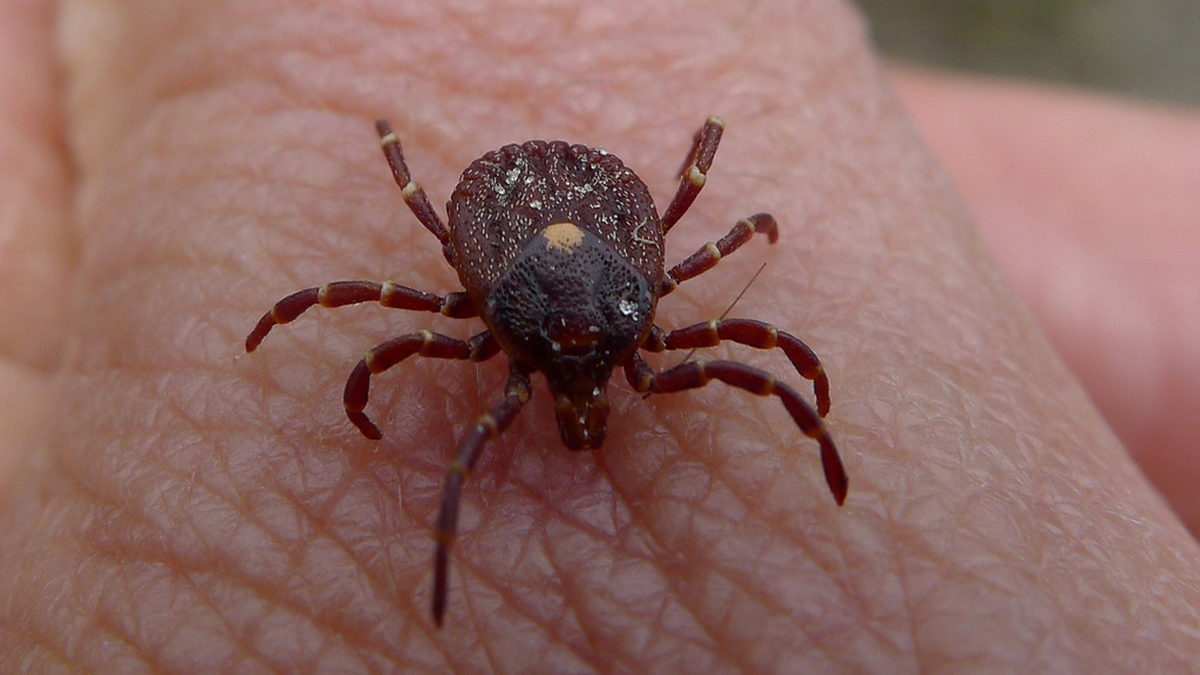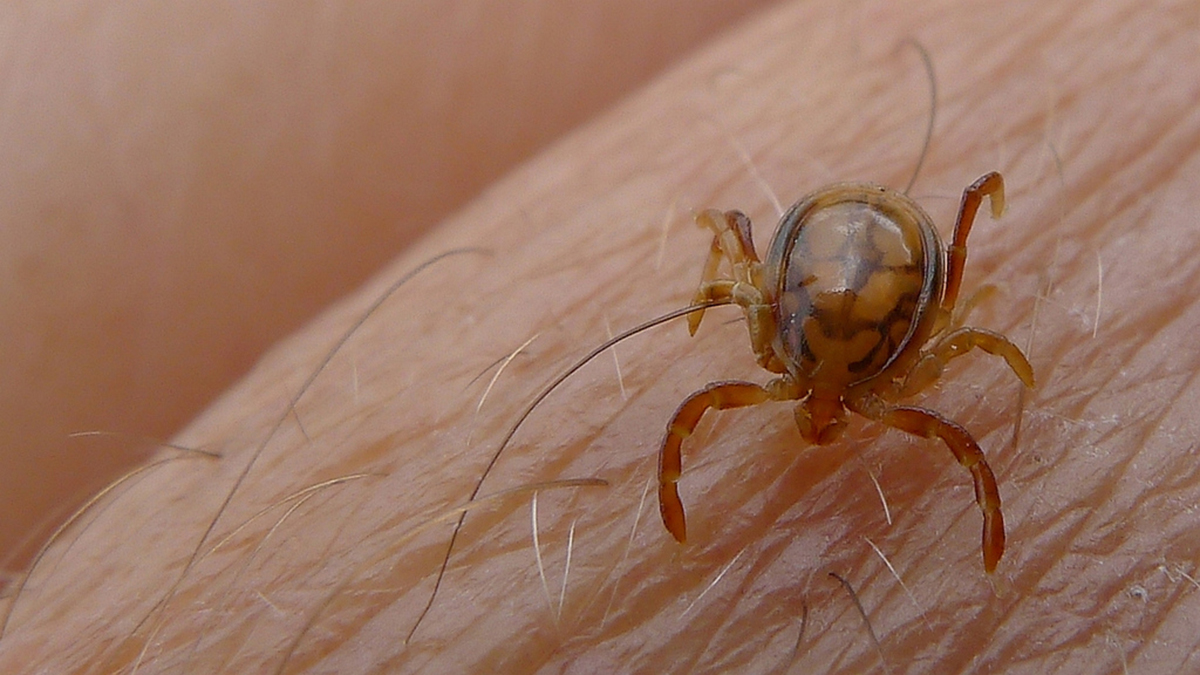Lyme disease is an infection that doesn't surrender to treatment easily. Transmitted by tick bites mostly to young and active people out enjoying nature, the infection can cause rashes, muscle aches, headaches, and swollen lymph nodes that give way to even more rashes, even more headaches and joint pain, heart rhythm issues, aches and pains all over, depression, brain fog, and, often, a condition called Bell's palsy, causing paralysis of one side of the face.

The causative agent in Lyme disease is a microorganism named Borrelia burgdorferi. This microbe is a kind of bacterium called a spirochete, which has the ability essentially to roll itself into a ball to escape detection by the immune system and to minimize contact with antibiotics. As a result, it takes time to treat Lyme disease with antibiotics, and once doctors put their patients on antibiotic treatment, they tend to keep them on the treatments for weeks or months at a time. However, a recent study found that using antibiotics for too long actually makes symptoms worse.
How Long Is Too Long for Antibiotic Treatment for Lyme Disease?
Doctors at the Radboud University Medical Center in Nijmegen in the Netherlands studied newly diagnosed Lyme disease patients. All the patients were given an antibiotic called cefrtriaxone (Rocephin) by IV every day for the first two weeks. Then the patients were divided into three groups. One group received doxocycline (which is available under a number of brand names, including Doryx, Oracea, Monodox, Atridox, Morgidox, Vibra-Tabs, Alodox, Ocudox, Doxy, Acticlate, and Vibramycin), which is commonly used to treat bacterial infections, for the next twelve weeks. Another group received a combination of two antibiotics, clarithromycin (Biaxin) and hydroxychloroquine (Plaquenil), which are more commonly given for parasitic infections, for twelve weeks. The third group received a placebo. Then the doctors measured the residual symptoms in the three groups.
READ New Tick-Borne Infection Similar To Lyme Disease Appears In US and UK
All three groups of patients were better at the end of twelve weeks. However, the group that had received the combination of medications had more symptoms than the group that had received just one antibiotic, and the group that had received no medication at all had the least symptoms at all.
What If Lyme Disease Treatment Goes on for Years?
While the media and the Internet tend to report the very worst cases of Lyme disease, about 80 percent of people who get the disease get over it in a few weeks. In 10 to 20 percent of people who have Lyme disease, however, the symptoms go on for months or years.
Other studies have looked at long-term antibiotic therapy for Lyme disease. The Persistent Lyme Empiric Antibiotic Study Europe (PLEASE) study involved 280 people who had symptoms, on average, for 2-1/2 years. These were people who had had the bulls eye rash or persistently achy joints or other symptoms of Lyme disease for years, but who had not been diagnosed at the likely time of the tick bite. Everyone was given Rocephin by IV for 14 days to "knock out" the infection, and then they were given the same treatment options as the groups mentioned above. When symptoms were longstanding, doxocycline was superior in controlling Lyme disease to placebo, but not by much, and about half the people who received antibiotics had problems with diarrhea, nausea, or allergic rashes. These problems did not occur in the placebo group.
Which Is the Superior Approach To Treating Lyme Disease?
Although there are some differences between strains of Lyme disease in Europe and North America, the sooner Lyme disease is treated, the less medication is necessary. When Lyme disease is treated right away, the best results are obtained from two weeks on intravenous Rocephin and then no antibiotic treatment at all. Antibiotics that don't have to be administered never cause side effects. But how can you recognize the symptoms of Lyme disease right away so you get treatment right away?

Lyme disease always follows a tick bite. If you have never, ever been bitten by a tick, you won't get Lyme disease. However, it's easy to pick up ticks without noticing them. Any time you go out for a walk in a location that has dry grass or brush, even in winter, you can brush against a plant from which a tick will jump off. The tick will then look for skin, preferably thin, moist, warm skin around your pubes, under your arms, or on your neck. The problem in detecting ticks is that they are extremely small, about the size of the head of a poppyseed, and their bites don't always hurt. If you don't do visual inspection of your feet and legs as soon as you come in from outdoors, then the tick has greater opportunity to climb up to a part of your body you cannot easily see.
Even when a tick attaches itself to your body, you have about 24 hours to remove it before it can transmit disease. The way you remove the tick makes a huge difference in whether or not it can pass an infection. The bacteria that cause Lyme disease live in the tick's gut, its hind end. The tick bites through your skin to feed on your blood through its front end. If you mash the backside of the tick, you are basically giving yourself an injection of germs. You need to remove the tick with tweezers, grabbing it by its head, which is attached to your skin. Remove the tick by its front end, not its hind end. It is best to use tweezers to remove ticks; Vaseline, dish soap, and hot match tips don't work as well.
READ Ticks: What You Should Know About Lyme Disease
Even better, use tick spray (permethrin) before you go outdoors, or wear tick-resistant clothing that has been treated with permethrin. The chemical lasts for about 70 washing. Be sure that there is no path a tick can take through your clothes to your skin. Wear long pants and stuff the pants into your socks.
What is the one thing to remember about seeing your doctor for Lyme disease?
If you come down with flu-like symptoms when it isn't flu season, and after you have been time outdoors, see your doctor right away. If you notice a rash that looks like someone painted a target on your body, then it is particularly urgent to see a doctor for early treatment. Blood testing for Lyme disease is notoriously unreliable, but an experienced doctor can tell you whether you need to start short-term antibiotics right away and maybe you can avoid long-term treatment.
- Melia M, Auwaerter P "Time for a different approach to Lyme disease and long-term symptoms" N Engl J Med 2016
- 374: 1277-1278.
- Project Plan: Guidelines for the Prevention, Diagnosis, and Treatment of Lyme Disease by the Infectious Disease s Society of America, the American Academy of Neurology, and the American College of Rheumatology. Infectious Diseases Society of America. Available at http://www.idsociety.org/uploadedFiles/IDSA/Guidelines-Patient_Care/PDF_Library/LD%20Project%20Plan%20March%202015%282%29.pdf.
- Photo courtesy of John Tann: www.flickr.com/photos/31031835@N08/6368338667/
- Photo courtesy of John Tann: www.flickr.com/photos/31031835@N08/6885765803/
- Photo courtesy of John Tann: www.flickr.com/photos/31031835@N08/6885765803/

